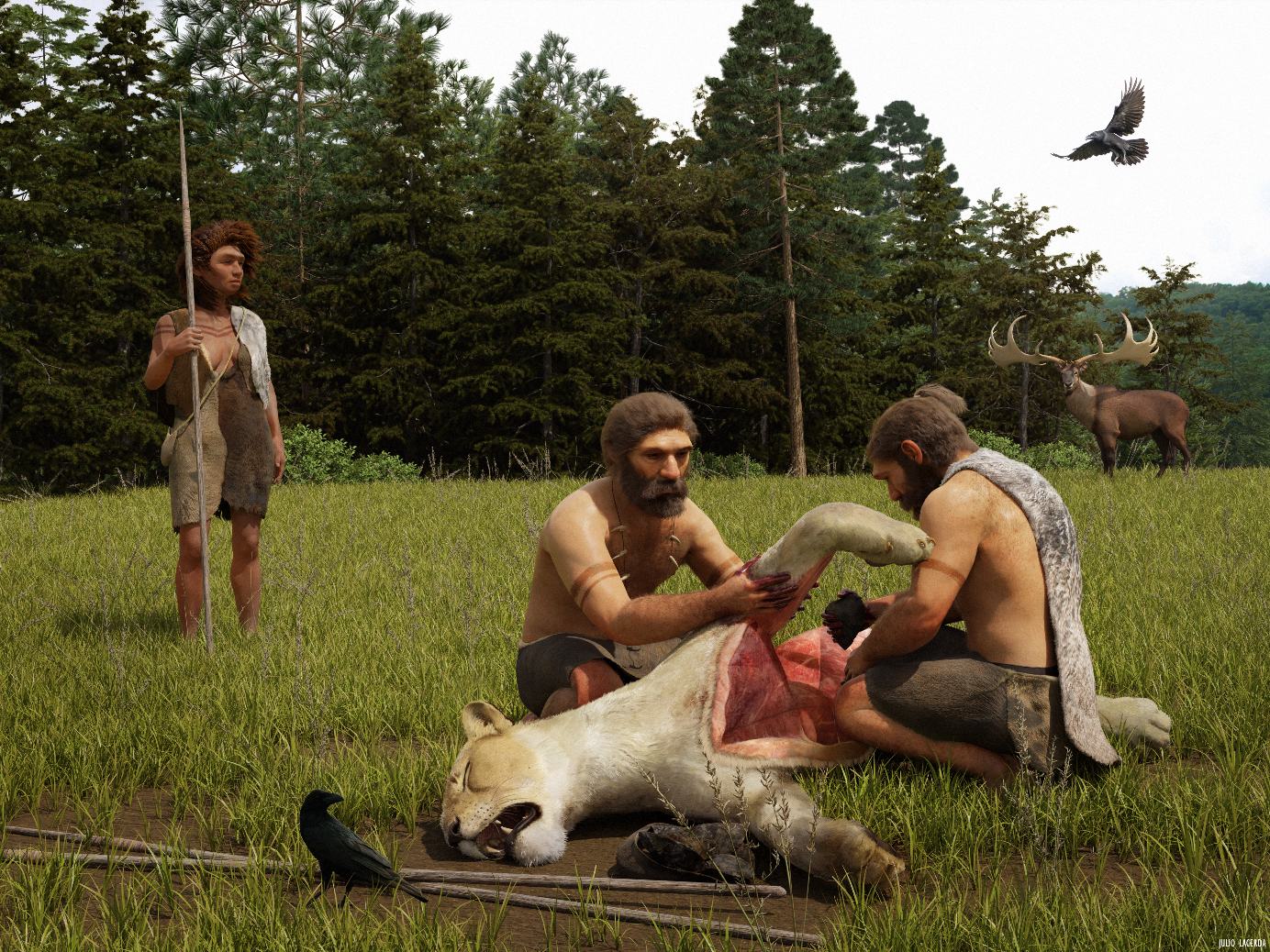News release
From:
Puncture wounds on a cave lion’s ribcage dating to 48,000 years ago in Germany suggest that Neanderthals killed the big cat with a wooden spear, and may represent the earliest example lion hunting and butchering by these ancient humans. The study, published in Scientific Reports, also presents the earliest evidence of Neanderthals using a cave lion pelt.
The interactions between Neanderthals and cave lions (Panthera spelaea) have been unclear despite the latter’s prominence in other ancient human cultures such as Homo sapiens cave paintings.
Gabriele Russo and colleagues analysed an almost complete cave lion skeleton from Siegsdorf, Germany which were originally excavated in 1985 and date to 48,000 years ago. The remains are thought to be from an old, medium-sized cave lion. The presence of cutmarks across bones including two ribs, some vertebrae, and the left femur previously suggested that ancient humans butchered the big cat after it had died. Now, however, the authors describe a partial puncture wound on the inside of the lion’s third rib, which appears to match the impact mark of a wooden-tipped spear. The puncture is angled, suggesting the spear entered the left side of the lion’s abdomen and penetrated vital organs before impacting the third rib on the right side. The characteristics of the puncture wound resemble those found on deer vertebrae which are known to have been made by Neanderthal spears. Therefore, the authors suggest that the Siegsdorf specimen represents the earliest evidence of Neanderthals purposely hunting cave lions.
The authors also analysed phalange and sesamoid bones from the toes and lower limbs of three cave lion specimens from Einhornhöhle, Germany, which were excavated in 2019 and date to approximately 55 – 45,000 years ago. These bones also show cutmarks consistent with those generated when an animal is skinned. The presence of the anthropogenically modified bones implies that they were left within the lion pelt, which was then abandoned at the site. The location of these cutmarks suggests a careful approach was taken during the skinning process to ensure the claws remained preserved within the fur. According to the authors, this may constitute the earliest evidence of Neanderthals using a lion pelt, potentially for cultural purposes.
Together, these findings provide new insights into the interactions between Neanderthals and cave lions in the Pleistocene.



 Australia; International; VIC; QLD
Australia; International; VIC; QLD



